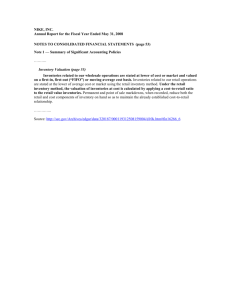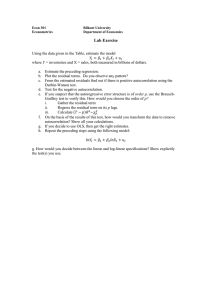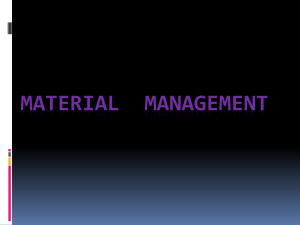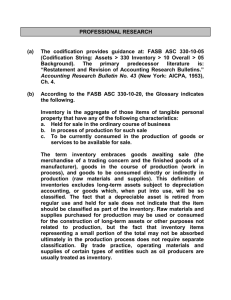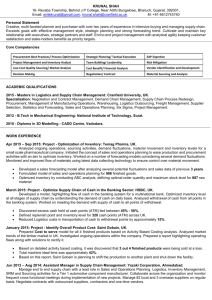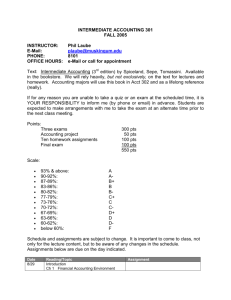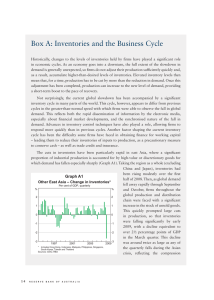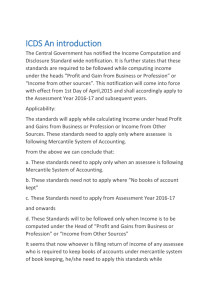Inventories
advertisement
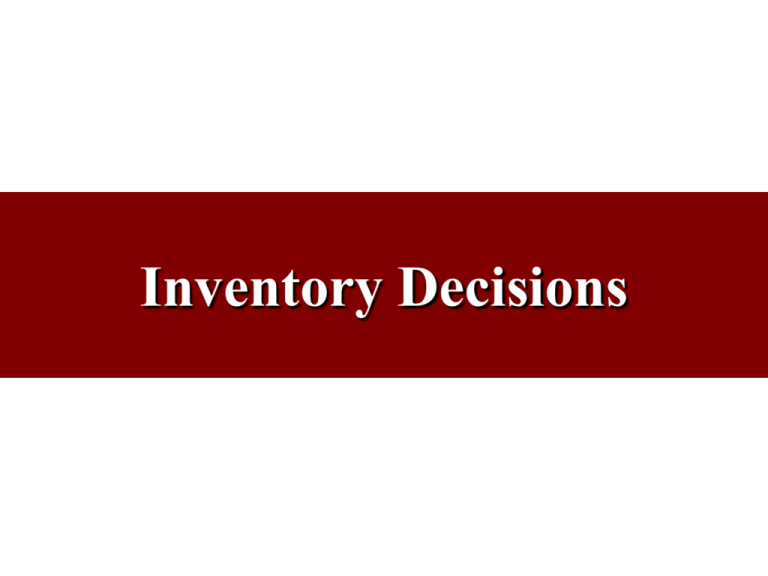
Inventory Decisions What are Inventories? • Stockpiles of raw materials, supplies, components, work in process, and finished goods. • Appear at numerous points throughout a firm’s production & logistics channel • Having inventories on hand can cost between 20 – 40 percent of their value per year Why Hold Inventories? • Improve customer service • Reduce costs – May encourage economies of production by allowing larger, longer, and more level production runs – Fosters economies in purchasing and transportation – Buying today in anticipation of higher prices tomorrow – Variability in time to produce & transport can cause uncertainties that impact on operating costs & customer service levels. Inventories serve as a buffer against this – Unplanned & unanticipated shocks can befall the logistics system (labor strikes, natural disasters, etc) Why Not Hold Inventories? • Wasteful in that they absorb capital that might otherwise be put to better use • Do not contribute to the direct value of the product (do store value however) • Can mask quality problems • Encourages insular attitudes – isolating one logistics channel stage from another Types of Inventories • Pipeline stock – Products in transit between stocking or production points • Speculation stock – Typically products bought in anticipation of seasonal selling or for price speculation • Regular (or cyclical) stock – Inventories necessary to meet the average demand during the time between replenishments • Safety stock • Obsolete (or dead, or shrinkage) stock Cost of Inventories • Procurement Costs • Carrying Costs – – – – Space Costs Capital Costs Inventory Service Costs (insurance, taxes, etc.) Inventory Risk Costs • Out-of-Stock Costs – Lost sale costs – Back order costs Purchasing Activities • • • • • • • • • • • Selecting & qualifying suppliers Rating supplier performance Negotiating contracts Comparing price, quality, & service Sourcing goods & services Timing purchases Setting terms of sale Evaluating the value received Measuring inbound quality Predicting price, service, & demand changes Specifying the form in which goods are to be received Basic Types of Products Purchased • Generics – Low-risk, low value items and services that do not enter the final product • Office supplies, MRO items • Commodities – Low-risk, high value items or services • Basic production items, basic packaging, logistics services Basic Types of Products Purchased • Distinctives – High-risk, low value items & services • Engineered items, parts available only from limited suppliers, items with long lead times • Criticals – High-risk, high value items or services that give the buyer’s product a competitive advantage in the marketplace • Unique items, items critical to the final product Advantages of Electronic Procurement • Lower operating costs – Reduced paperwork – Reduced sourcing time – Improve control over inventory & spending • Improve procurement efficiency – – – – Find new supply sources Improve communications Improve personnel use Lower cycle times • Reduce procurement prices – Improve comparison shopping – Reduce overall prices paid • • • • • • Disadvantages of Electronic Procurement Security Lack of face-to-face contact between buyer & seller Lack of standard protocols System reliability Technology problems Reluctance to invest time & money to learn new technology

